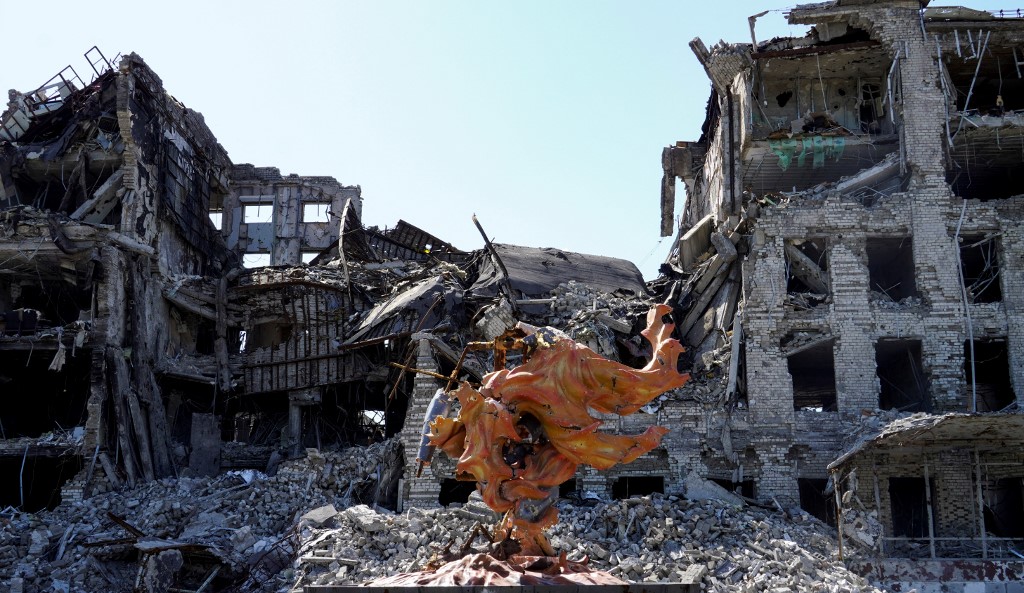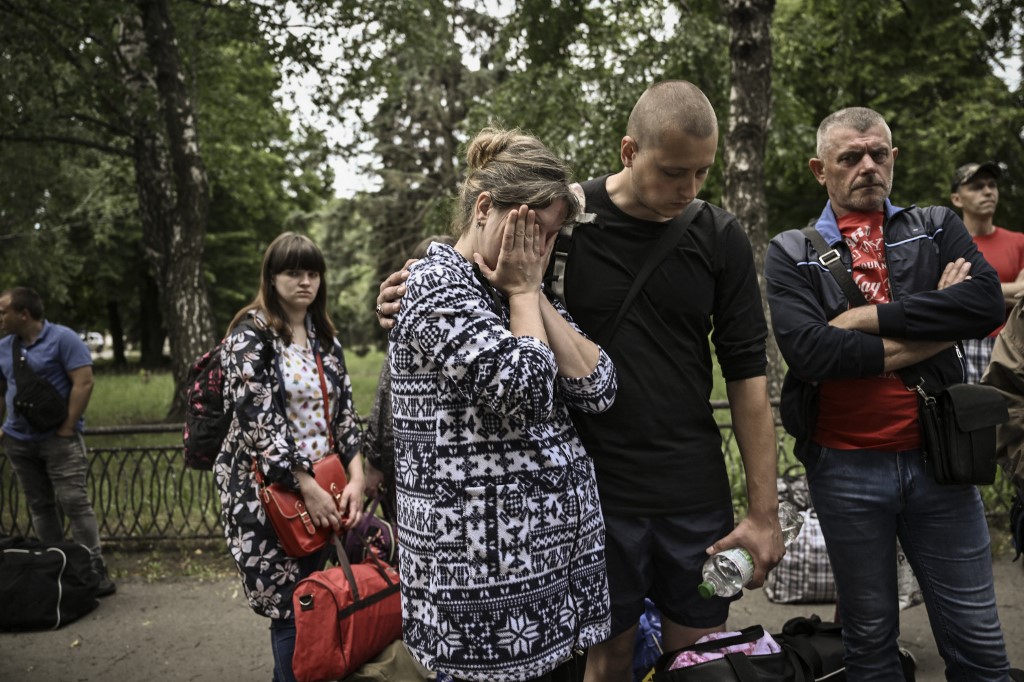SOLEDAR: Ukraine marked 100 days since Russia’s invasion on Friday with fighting raging across the east of the country, where Moscow’s forces are tightening their grip on the Donbas.
The somber milestone came as Kyiv announced Moscow was now in control of a fifth of Ukrainian territory, including Crimea and parts of the Donbas seized in 2014.
After being repelled from around the capital, President Vladimir Putin’s troops have set their sights on capturing eastern Ukraine, prompting warnings the war could drag on.
Following White House talks with US President Joe Biden, NATO chief Jens Stoltenberg warned Thursday that Ukraine’s allies needed to brace for a gruelling “war of attrition.”
“We just have to be prepared for the long haul,” Stoltenberg said, while reiterating that NATO does not want direct confrontation with Russia.
Despite a slower than expected advance, Moscow’s forces are making progress — President Volodymyr Zelensky told Luxembourg lawmakers about 20 percent of Ukrainian territory was now in Russian hands.
Since Russia’s February 24 invasion, thousands of people have been killed and millions forced to flee. On the battlefield, up to 100 Ukrainian soldiers are dying every day, according to Zelensky.

Since Russia’s February 24 invasion, thousands of people have been killed and millions forced to flee. (File/AFP)
Street battles are raging in the industrial hub of Severodonetsk in Lugansk, part of the Donbas.
Russia already controls about 80 percent of the strategic city but its defenders are putting up stiff resistance, with Lugansk regional governor Sergiy Gaiday vowing Ukrainian forces will fight “until the end.”
Severodonetsk’s Azot factory, one of Europe’s biggest chemical plants, was targeted by Russian soldiers who fired on one of its administrative buildings and a warehouse where methanol was stored.
Ukrainian troops were still holding an industrial zone, Gaiday said, a situation reminiscent of Mariupol, where a huge steel works was the southeastern port city’s last holdout until Ukrainian troops finally surrendered in late May.
In the city of Sloviansk, about 80 kilometers (50 miles) from Severodonetsk, residents said there were constant bombardments by Russian troops.
“It’s very difficult here,” said paramedic Ekaterina Perednenko, 24, who only returned to the city five days ago but realizes that she will have to leave again.

In the southern city of Mykolaiv, Russian shelling killed at least one person and injured several others, Ukrainian military officials said late Thursday. (File/AFP)
“Shooting is everywhere, it’s scary. No water, electricity or gas,” she said.
In the southern city of Mykolaiv, Russian shelling killed at least one person and injured several others, Ukrainian military officials said late Thursday.
Valeriy Zaluzhnyi, the commander in chief of Ukraine’s armed forces, pleaded for modern armaments, saying that “the enemy has a decisive advantage in artillery.”
“It will save the lives of our people,” he added.
Led by the United States, Western nations have pumped arms and military supplies into Ukraine to help it survive the onslaught.
Bridget Brink, the new US ambassador to Kyiv, promised Thursday that the United States would “help Ukraine prevail against Russian aggression,” after presenting her credentials to Zelensky.
Earlier this week, the United States announced that it was sending more advanced Himar multiple rocket launch systems to Ukraine.
The mobile units can simultaneously fire multiple precision-guided munitions at targets up to 80 kilometers away.
They are the centerpiece of a $700 million package that also includes air-surveillance radar, ammunition, helicopters and vehicles.
Kremlin spokesman Dmitry Peskov accused Washington of “adding fuel to the fire,” although US officials insist Ukraine has promised not to use them to strike inside Russia.
Beyond sending arms to Ukraine, Western allies have also sought to choke off Russia’s financial lifeline in a bid to get Putin to change course.
Ramping up an already long list of embargoes, the United States blacklisted Putin’s money manager and a Monaco company that provides luxury yachts to Moscow’s elite.
Across the Atlantic, EU nations agreed new sanctions that would halt 90 percent of Russian oil imports to the bloc by the end of the year.
























